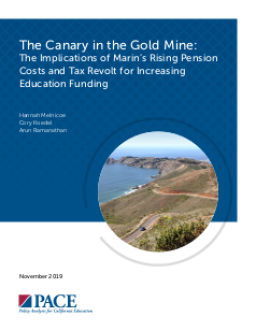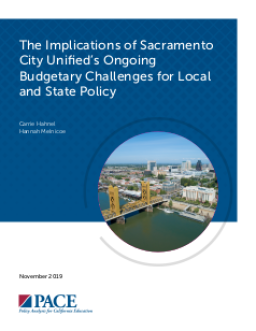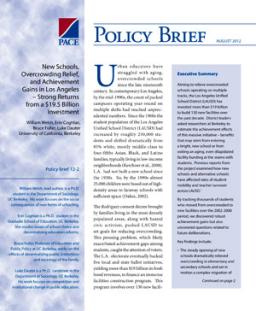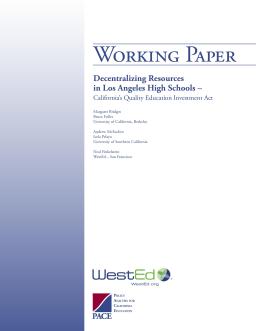The Implications of Marin’s Rising Pension Costs and Tax Revolt for Increasing Education Funding
Published
Summary
Marin County's schools face rising costs, particularly for pensions and declining enrollment, which is not sustainable. Teacher salaries and recruitment are affected, with limited public awareness of district flexibility to respond to rising pension costs. Parcel taxes have faced opposition, and a statewide funding solution is necessary to support student success and stop financial distress. Building awareness of pension costs' impact is essential, and benefits and salaries are necessary to retain teachers.
Published
Summary
This case study examines the looming deficit faced by Sacramento City Unified School District and the challenges it poses for students, including declining enrollment, increasing special education and pension costs. It also highlights the impact of SCUSD's budget practices and labor-management relations on its current budget situation. The report offers considerations for policymakers, including addressing unaffordable teacher benefits and increasing funding. Although the district's fiscal crisis cannot be solved overnight, stabilizing the situation and restoring public confidence are crucial.
Strong Returns from a $19.5 Billion Investment
Published
Summary
The LAUSD invested over $19B to build 130 new facilities to relieve overcrowded schools. A PACE policy brief analyzed its effects on student achievement and found robust gains for many elementary-school pupils who switched from old to new facilities. However, significant gains were limited to elementary school students and new high school facilities produced weak and inconsistent achievement gains. The report also tracked thousands of students who moved from overcrowded to new facilities over the 2002-2008 period.
California’s Quality Education Investment Act
Published
Summary
This working paper examines the use of Quality Education Investment Act (QEIA) funds, which allocated $2.6B over seven years to California's lowest-performing schools. The authors conducted a study of four Los Angeles high schools to investigate how QEIA dollars were spent in the first year, who made the decisions, and how funds were used to improve teaching and the instructional program. The study found that district officials and principals had discretion in allocating funds, consistent with recent efforts to deregulate categorical-aid programs and give local educators fiscal discretion.



